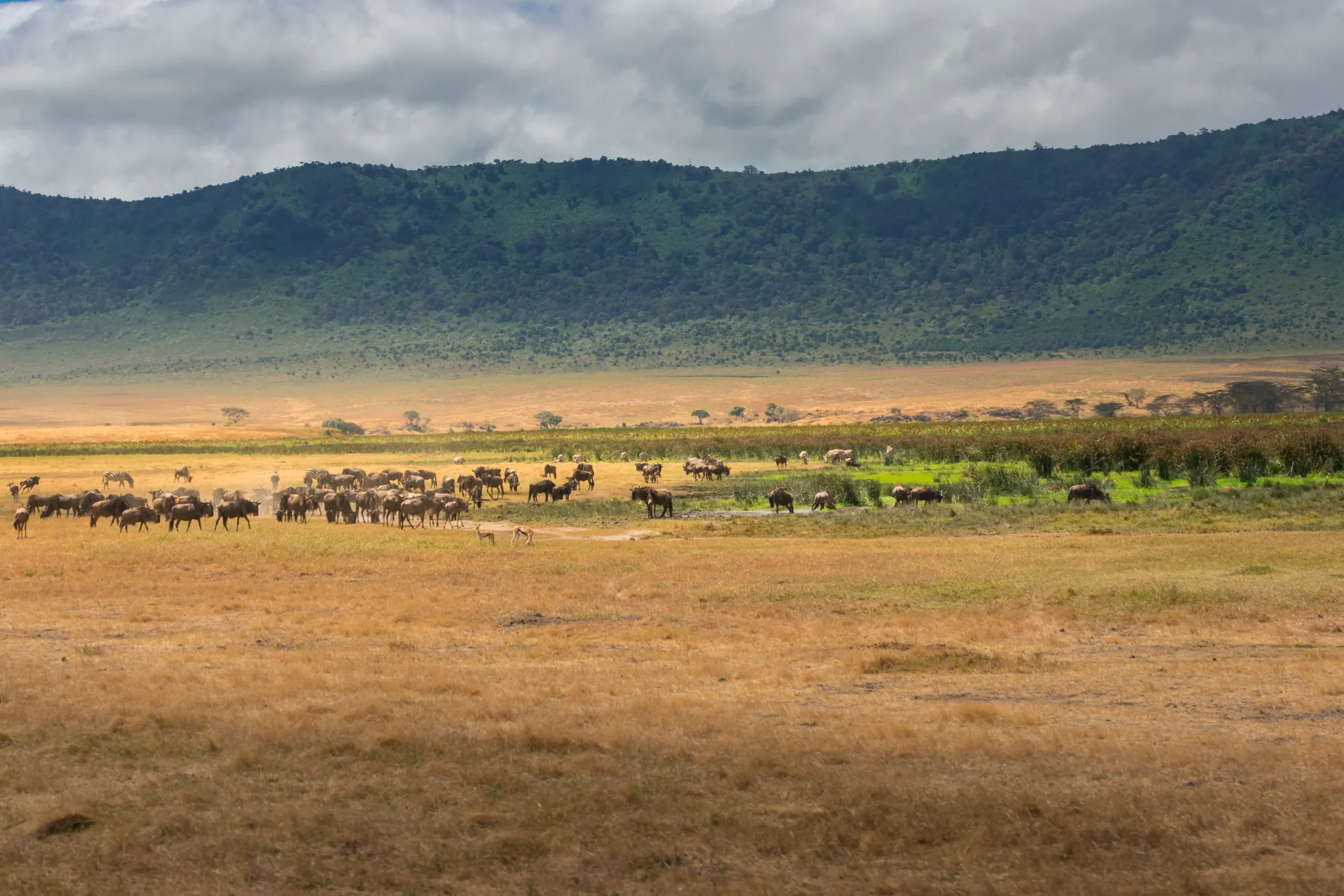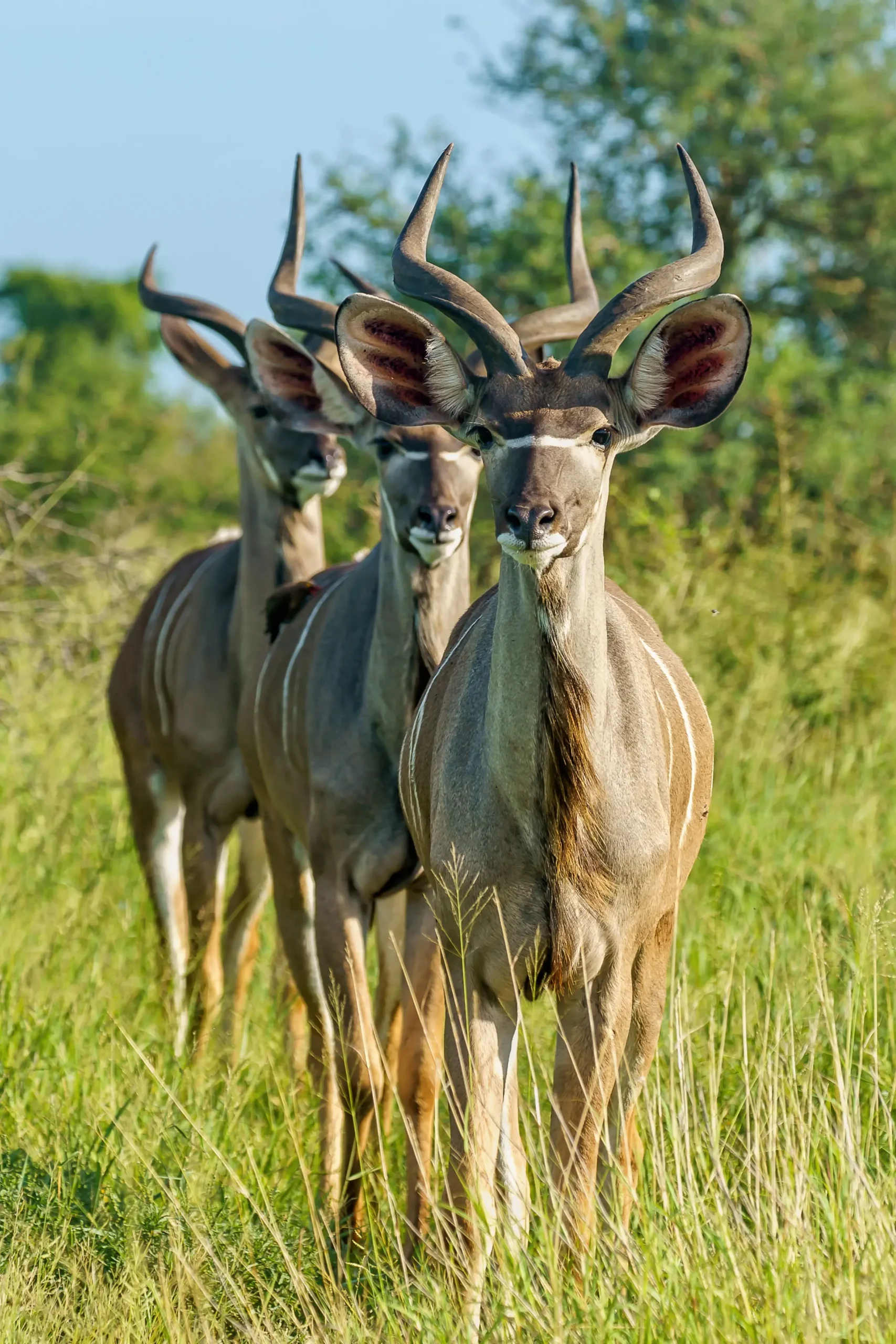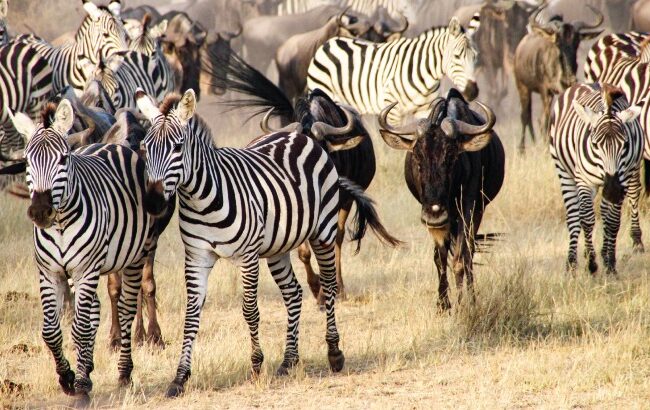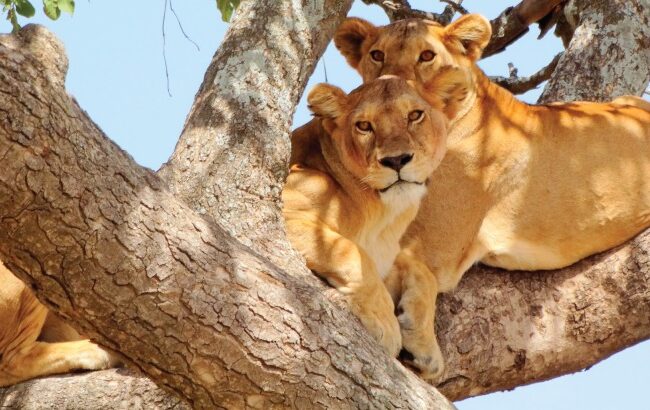Our Destinations
To More Inquiry
Email:
info@moriasafari.com
To More Inquiry
Lake Manyara National Park
- Home
- Lake Manyara National Park
Nestled at the foot of the Great Rift Valley escarpment in northern Tanzania, Lake Manyara National Park is a true hidden treasure — compact, but wildly diverse. Often overshadowed by its famous neighbors like Serengeti and Ngorongoro, Manyara delivers its own unique charm and unforgettable moments.
🐘 Why Visit Lake Manyara?
- Tree-Climbing Lions – Yes, you read that right! Unlike lions elsewhere, Manyara’s prides are known to climb trees during the heat of the day — a rare behavior that draws wildlife lovers and photographers from around the world.
- Flamingo-Filled Lake – The shallow, alkaline lake is often blanketed with thousands of pink flamingos, pelicans, and other birdlife — making it a birdwatcher’s paradise with over 400 species recorded.
- Elephants Up Close – The park’s thick groundwater forest is home to large elephant families, often seen crossing the road just meters from your safari vehicle.
- Diverse Ecosystems in One Day – From lush jungle to open savannah and the lake itself, it’s one of the few parks where you can experience multiple landscapes in a single drive.
Moria Safari Tip:
At Moria Safari, we love including Lake Manyara as a perfect warm-up or cool-down destination — often paired with Tarangire or Ngorongoro for a complete northern circuit experience. Whether you’re seeking serenity or unique wildlife, this park doesn’t disappoint.
Best Time to Visit:
- Dry Season (June to October): Best for large mammals and clearer paths.
- Wet Season (November to May): Incredible birdlife and lush scenery.
Our Destination Highlight
Recommended Package
Starting From:
$2,202TAXES INCL/PERS
Starting From:
$2,000TAXES INCL/PERS
Starting From:
$2,200TAXES INCL/PERS
Starting From:
$650TAXES INCL/PERS
Starting From:
$1,100TAXES INCL/PERS
Starting From:
$850TAXES INCL/PERS
Starting From:
$1,450TAXES INCL/PERS
Starting From:
$1,000TAXES INCL/PERS
Starting From:
$1,200TAXES INCL/PERS


















